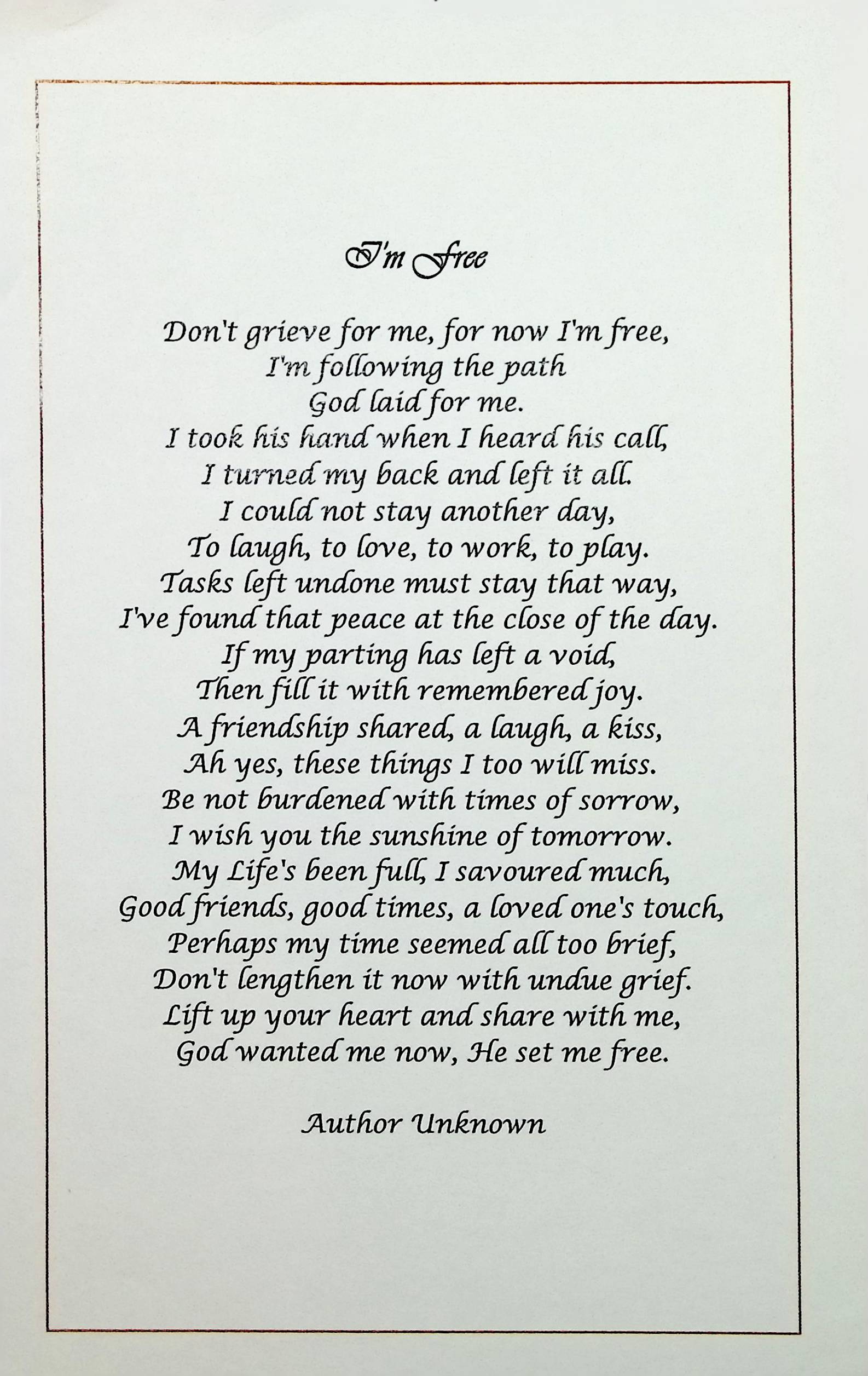
Demolition Photo
Going, Gone The first demolition in Lakeland located at 4800 Navahoe St. The first of 65 structures to be cleared

Going, Gone The first demolition in Lakeland located at 4800 Navahoe St. The first of 65 structures to be cleared

Letter to Donald McLaughlin from Morris Topf, City reached an agreement to abandon/dismiss the pending condemnation suit and pay legal and other fees City Attorney, Subject College Park Versus Weygandt, 5415 Detroit Avenue
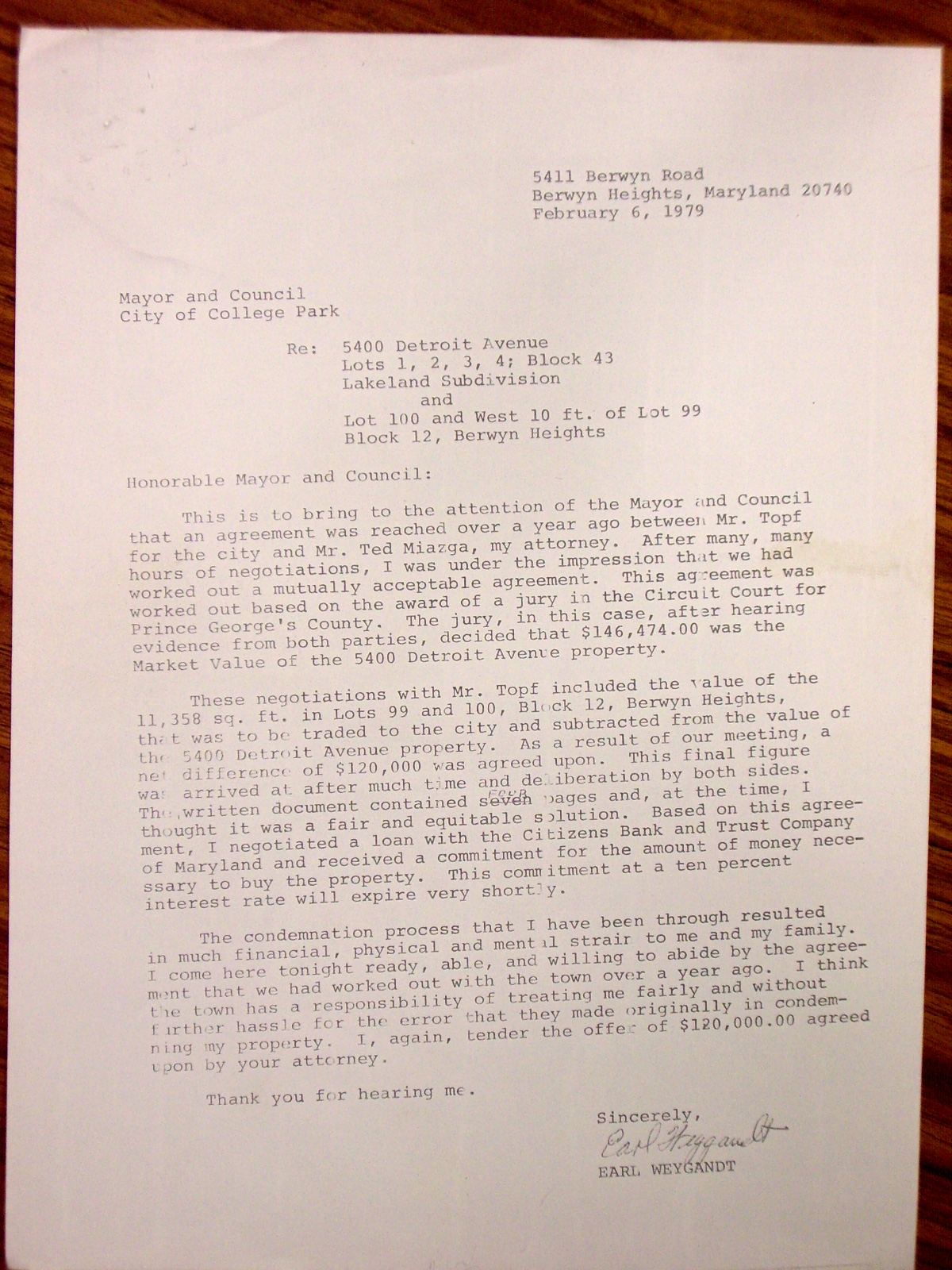
Discussion of his case and request to sell back property for $120, 000.

Photograph of Lake Artemesia Natural Area. The 38-acre park opened as a public facility in 1992. Located in what was once the eastern section of Lakeland (between the B&O railroad tracks--and now also the Washington Metrorail Green Line--and Berwyn Heights), it features aquatic gardens, fishing piers, and trails. The new Lake Artemesia is the product of builders dredging for gravel to elevate the rail bed that would carry commuter trains along Washington Metrorail's Green Line. Once the excavation was finished, the area was redeveloped and given to the local parks authority. The park stands on the former site of 30 Lakeland homes.
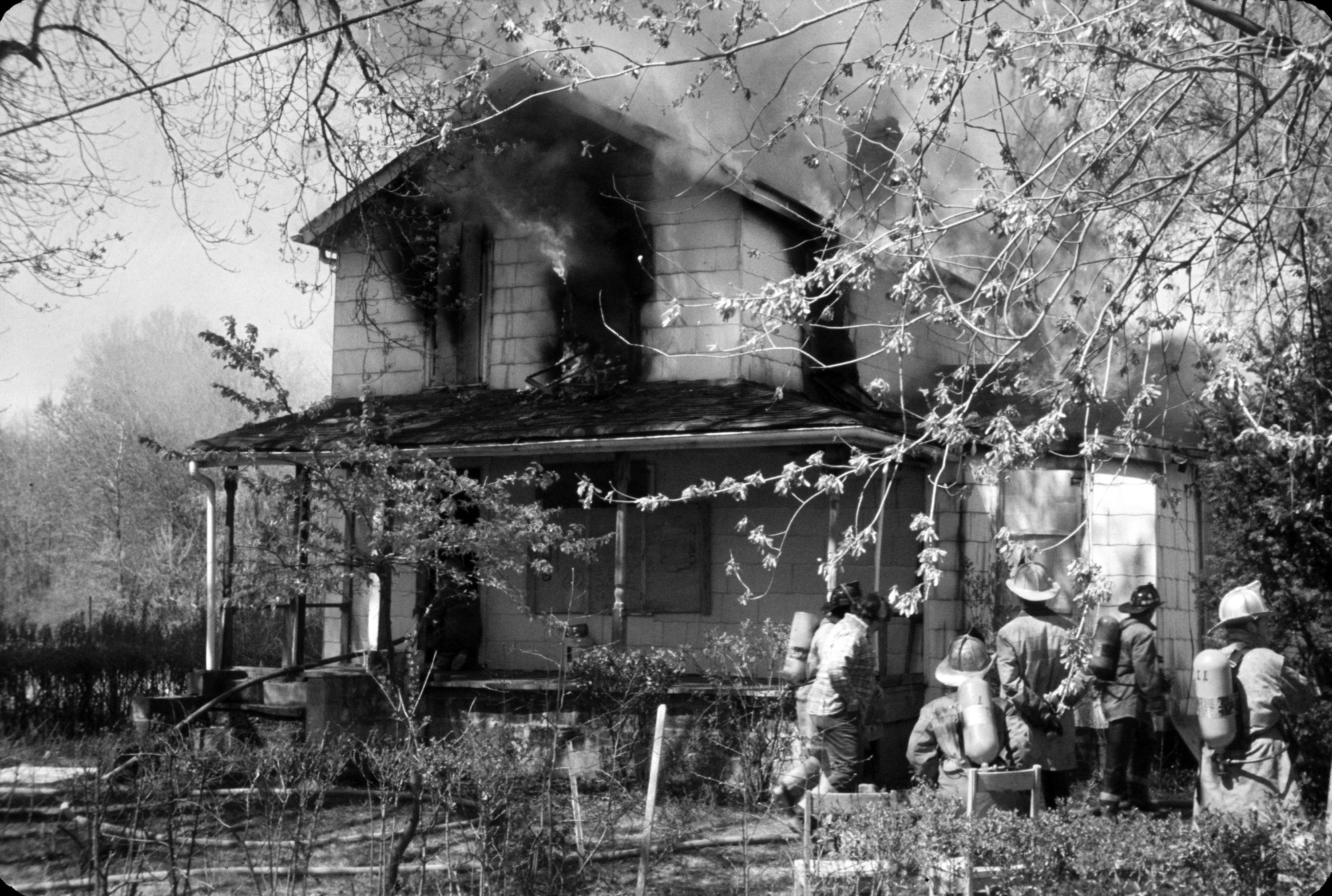
Once the City of College Park adopted the Urban Renewal plan in 1970, two thirds of the community's households--mostly in the eastern and western sections of Lakeland--had to vacate their houses. After families had moved out, several of Lakeland’s homes were burned as training exercises for the local fire department. Here is a photo of one such incident.
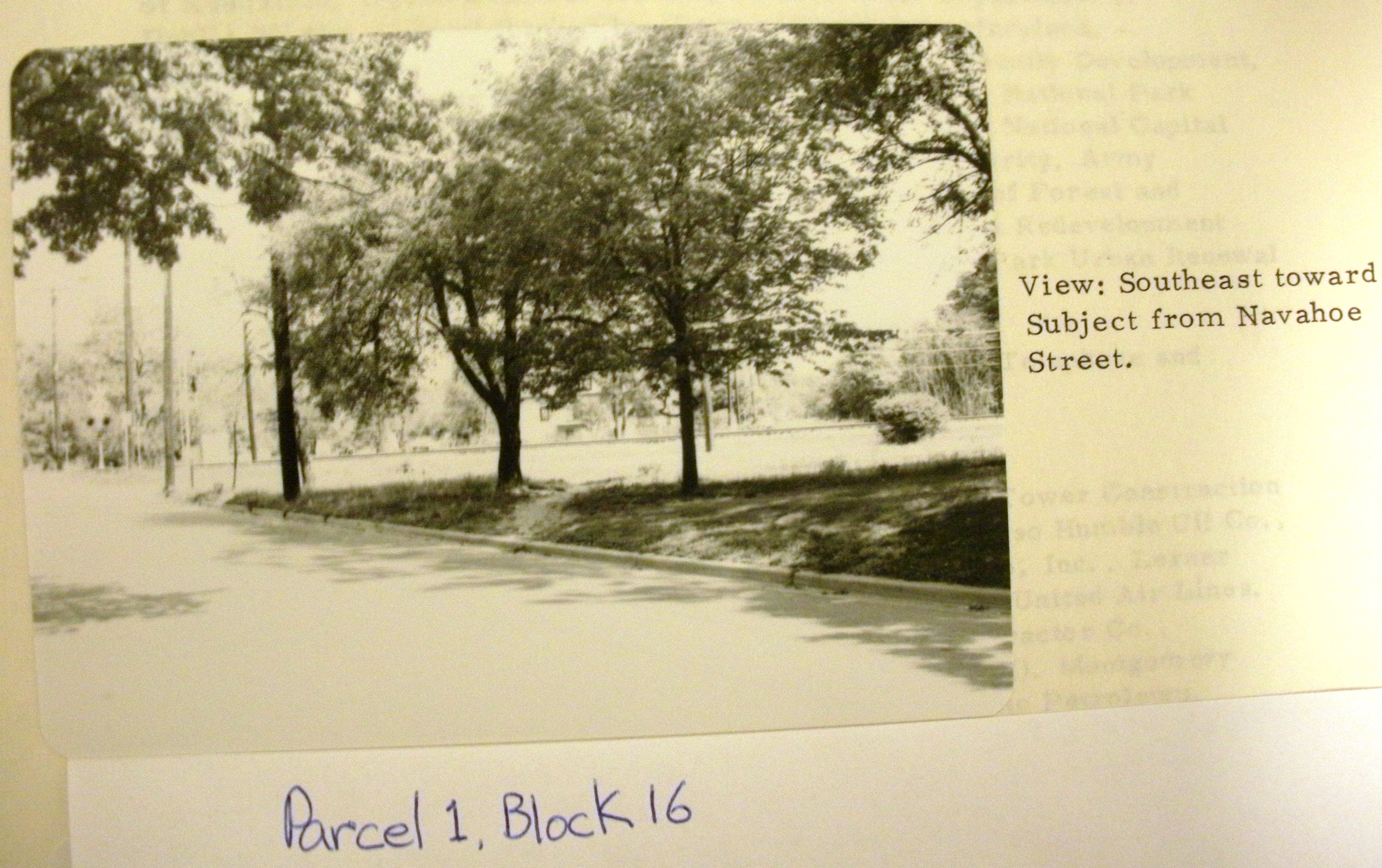
"Looking Southeast toward Navahoe Street from 8000 block of 54th Ave" Note attached is not correct. View was from Lakeland Road. The rail crossing was not visible from Navahoe St.
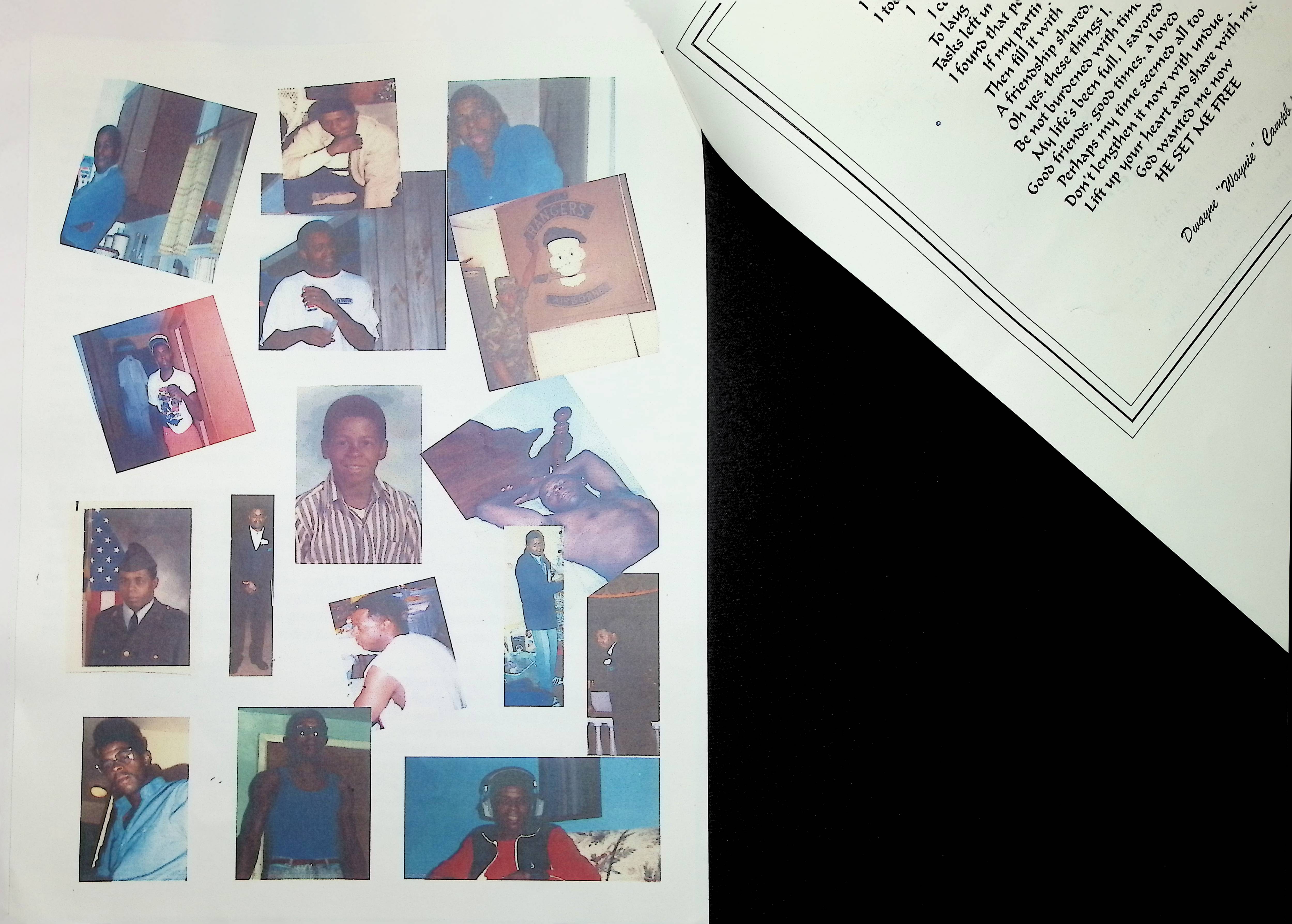
This map shows notations on owners of properties
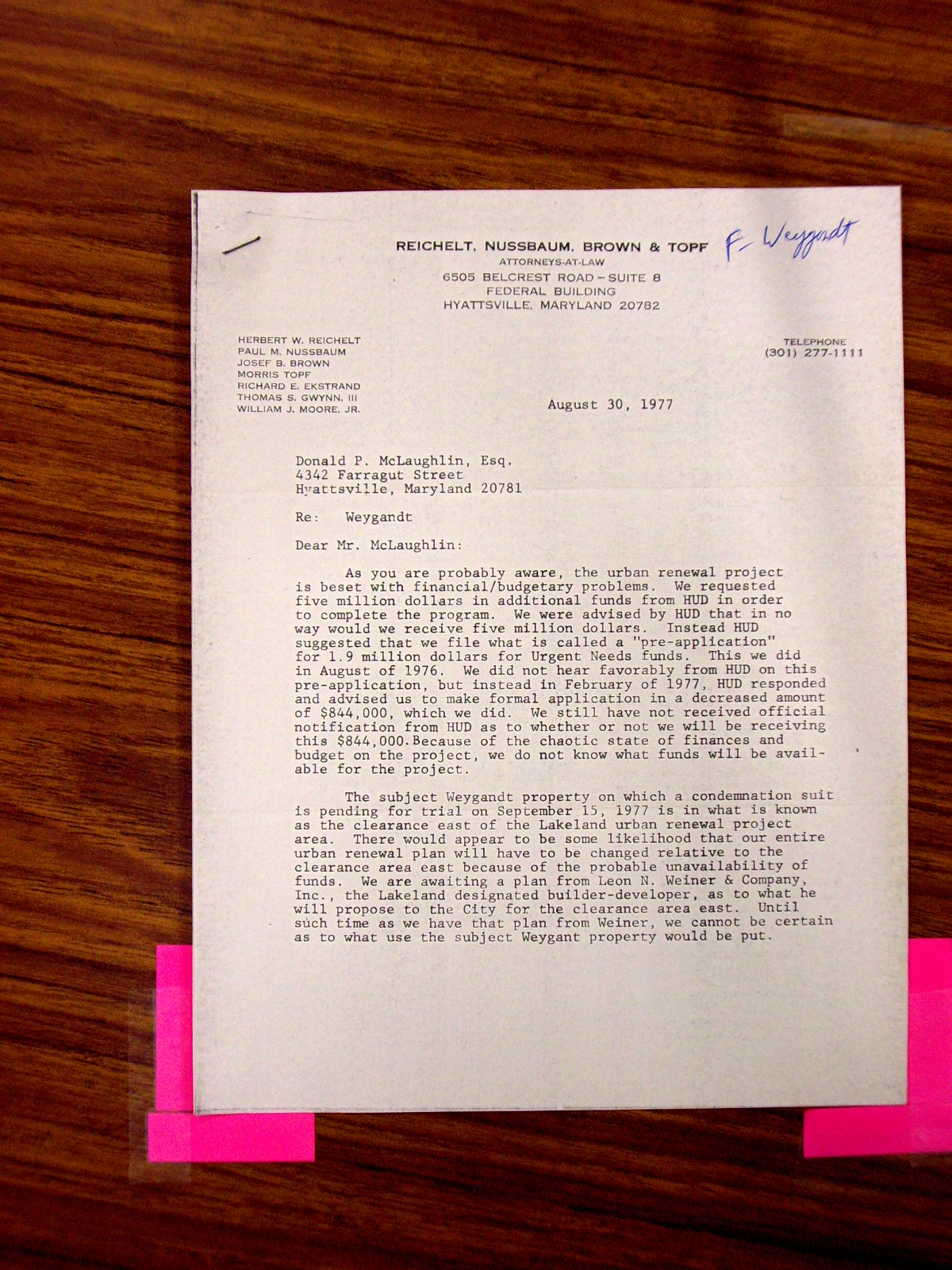
"Letter to Donald P. McLaughlin from Morris Topf, City Attorney Asking for request to continue case. Waiting for Weiner plan and will likely require change to urban renewal plan requiring additional action" Giving status of urban renewal project. "There would appear to be some likelihood that our entire urban renewal plan will have to be changed..."

"College Park Mayor and Council Work Session Briefing Paper on Lakeland Urban Renewal Project, Weygandt Property - giving history of project, action and rationale #114 page 2 of 1"
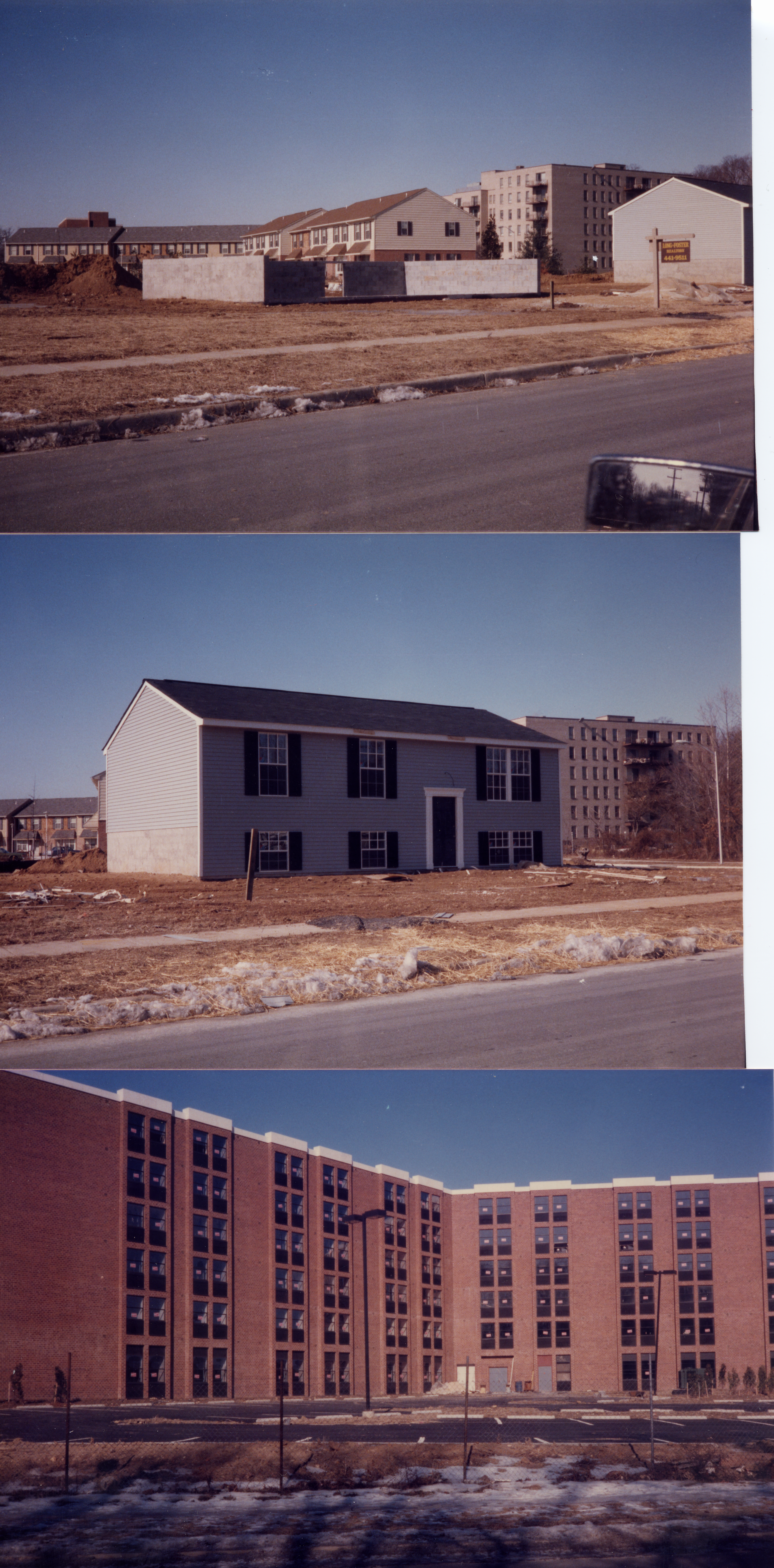
Three images of urban renewal redevelopment projects top in foreground are two of the 5 single family homes built during the urban renewal project. These are on Rhode Island Avenue. On the foreground is Alden/Berkley Townhomes. Image below is a closeup view of one of the 5 single family homes. Final image shows a new apartment building
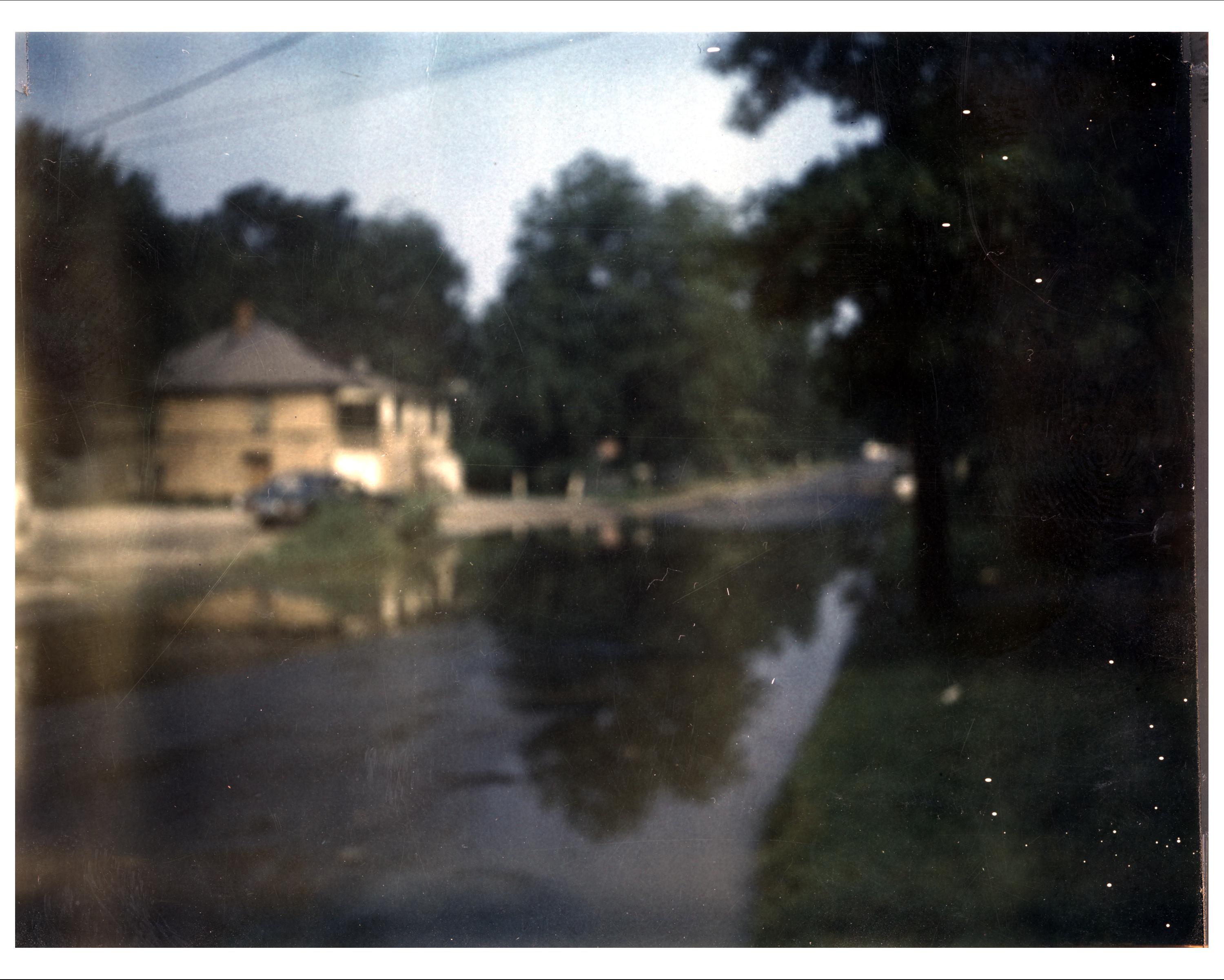
Western Navahoe Street

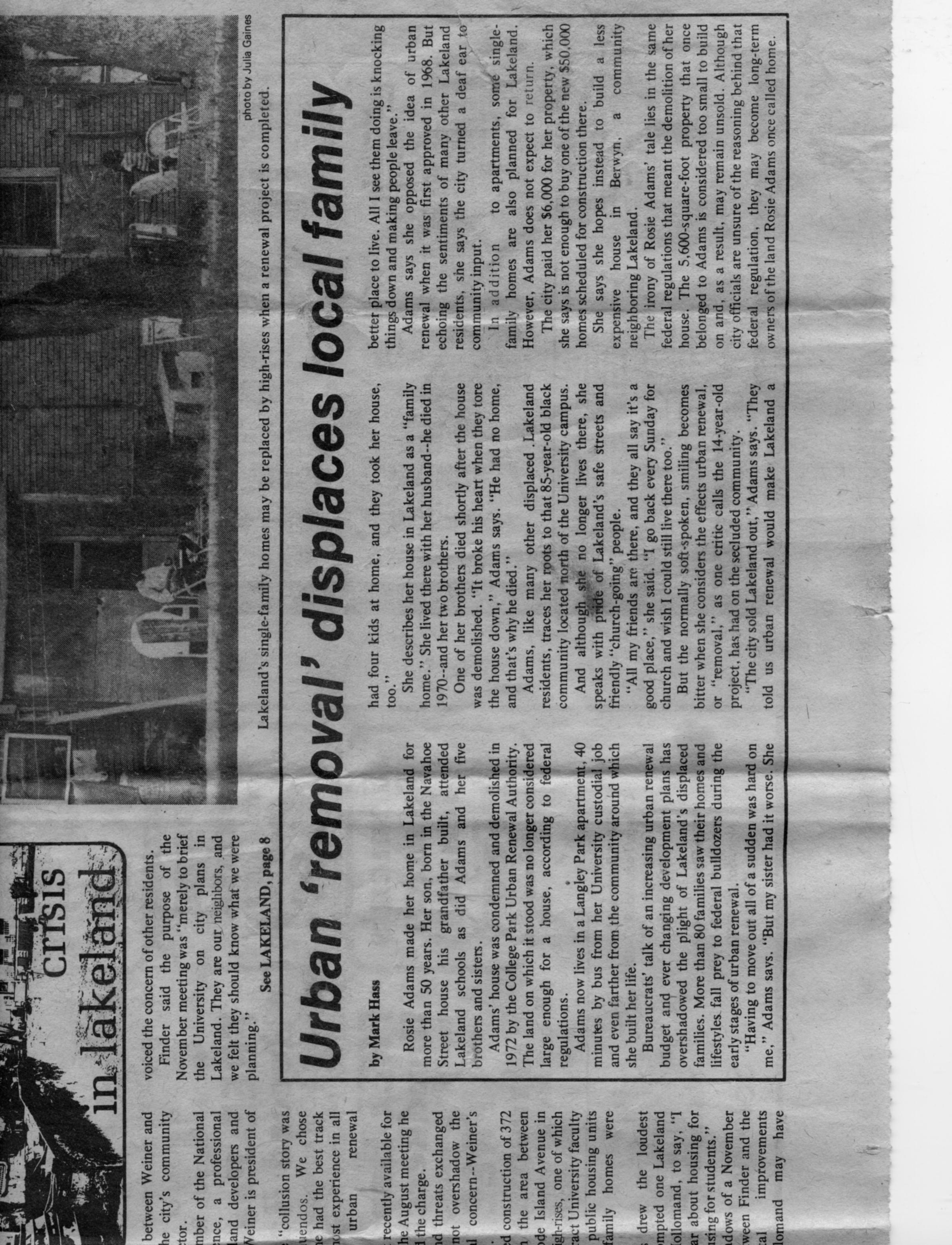
The Diamondback April 21, 1978 Page 1 by Mark Haas Crisis in Lakeland There was upset when Leon Weiner, a Wilmington developer was chosen to complete work on the Lakeland urban renewal project. Community members preferred a local builder. HIs plan would provide tow high rise buildings and only six single family homes. Community leaders felt there was collusion involved in the developer's selection. In answer Weiner threatened a slander suit. Residents were most displeased with the inclusion of two high rise buildings. This comes on the heals of a meeting between the city and University discussing the Lakeland plans. In 1974 the University offered a joint student development project in Lakeland. That proposal was publicly turned down. At that time the urban renewal plan called for apartment buildings on the east side of the railroad in Lakeland. City officials said community members would be able to relocate in the central conservation area and 30 building lots would be available there this year. Project Area Committee (PAC) spokesman Leonard Smith and other residents made known their desire to return to the original development plan with more single family homes. Smith said "Why should the community be forced to bear the weight of the money problems when we did nothing to cause it? Why should we be hurt by it?

HUD financed apartment building erected as part of the urban renewal program in Lakeland. Accompanying document to Press Release on Spellman House, includes drawing/rendering.
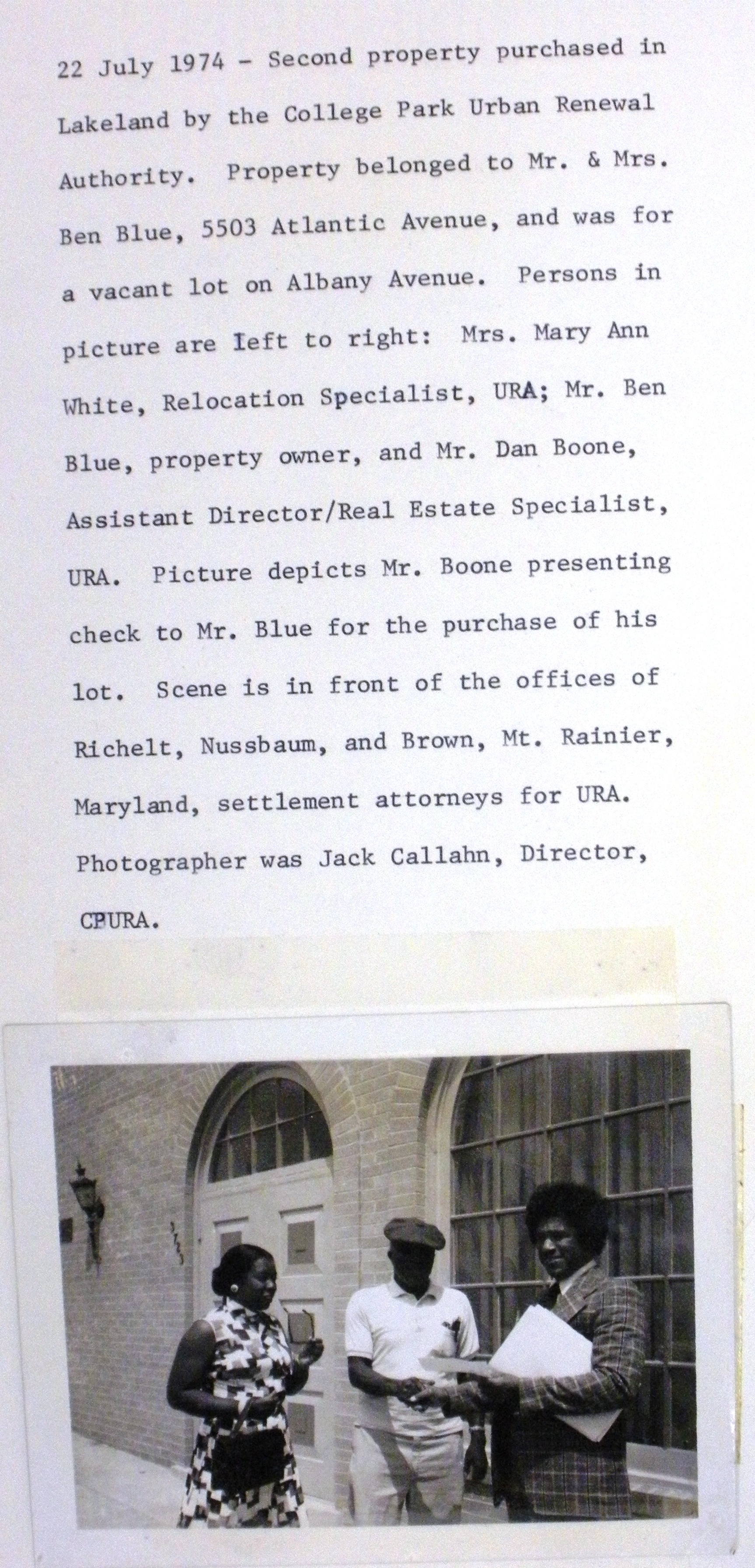
Second Urban Renewal Purchase Shown are Mr. and Mrs. Ben Blue. The property purchased was a vacant lot located on Albany Ave. Pictured with them is Dan Boone, Urban Renewal Assistant Director/ Real Estate Specialist the photographer noted was Jack Callahan, Urban Renewal Director
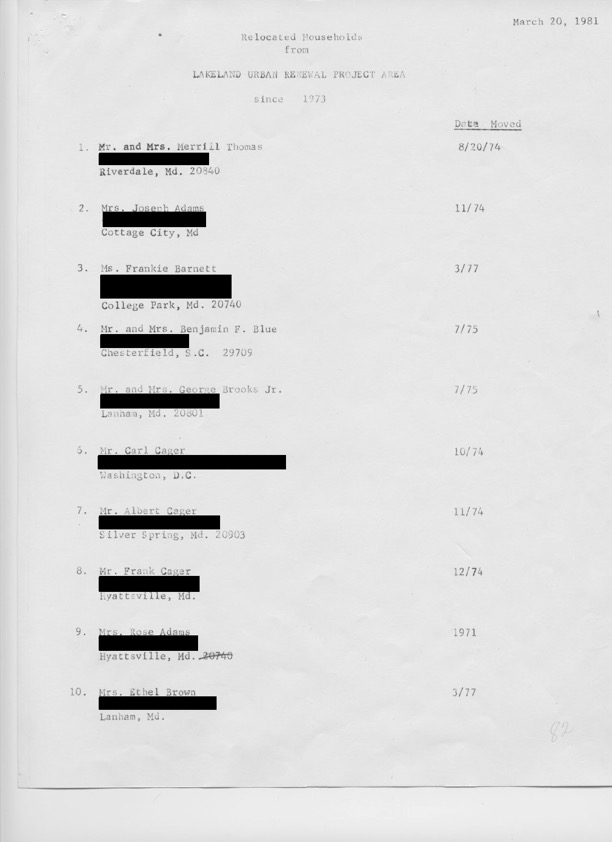
City of College Park - relocation list since 1973 dated 3/20/81
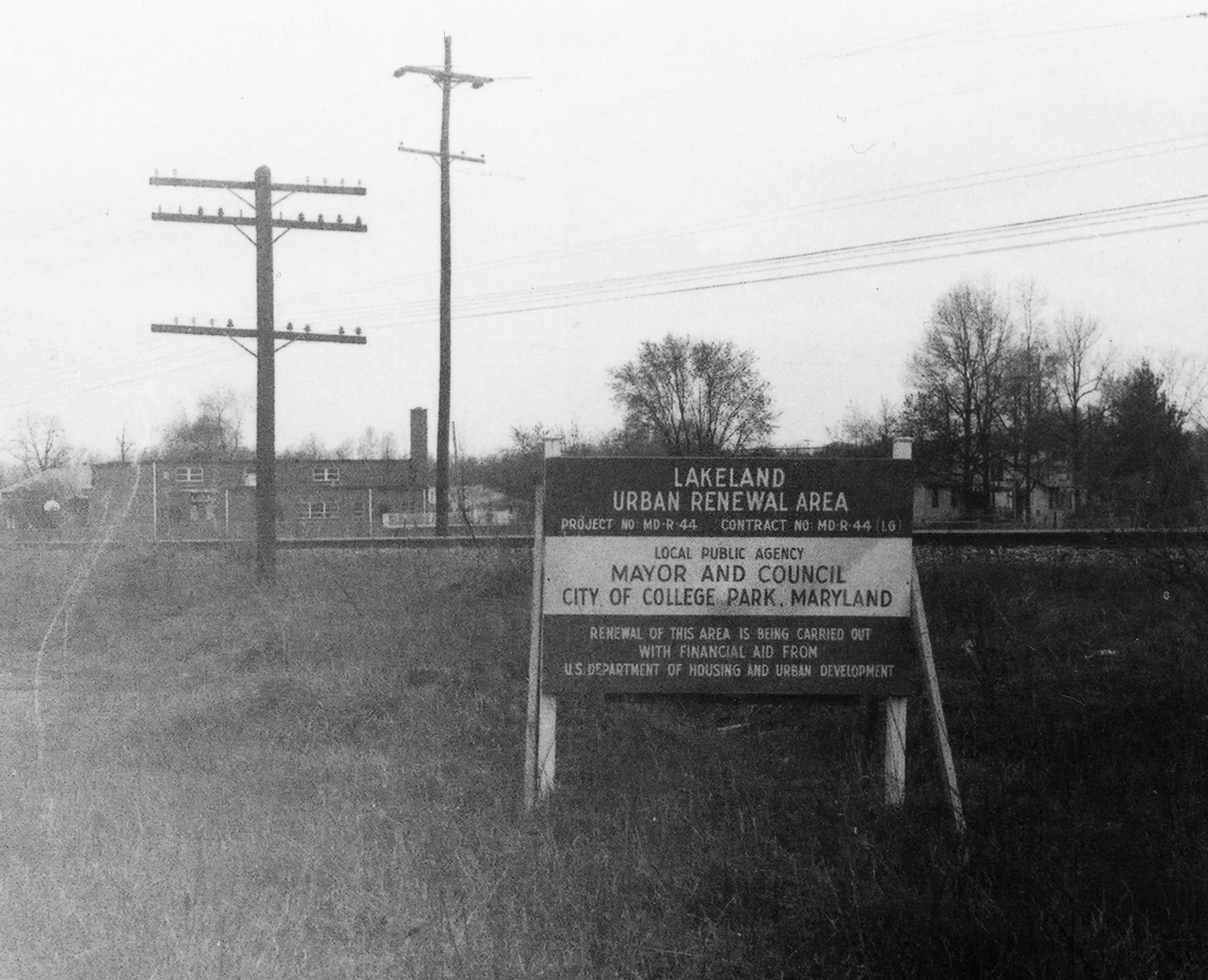
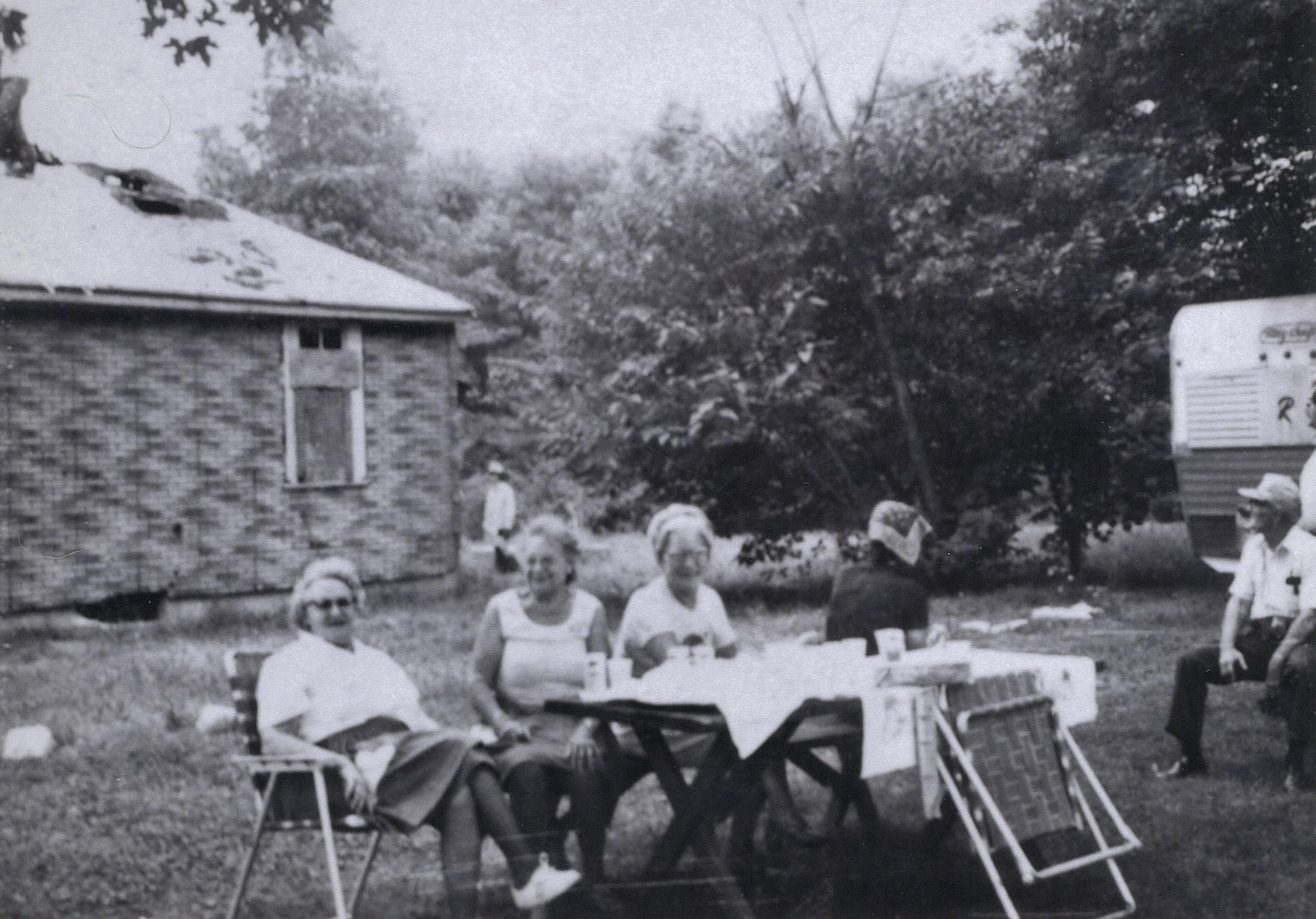
Several Lakeland homes were burned as training exercises before being demolished to make way for urban redevelopment. this image shows spectators gathered with refreshments to witness one of the burnings.

4800 Navahoe Street - First Lakeland home demolished shown with bulldozer and rubble.

The Diamondback April 21, 1978 Page 1 Portion of article by Mark Hass Rose Adams lived in Lakeland for more than 50 years. Her son was born in a house built by his grandfather on built on Navahoe Street. In 1972 that house was demolished by the City of College Park. Mrs. Adams has moved to an apartment in Langley Park a 40 minute ride from her job as a custodian on the University campus. The family's Lakeland house was a "family home." were she had lived with her husband and two brothers. One of them died soon after the house was demolished. Adams said "It broke his heart when they tore the house down'" "He had no home, and that's why he died." Mrs. Adams says she still has friends in Lakeland and goes there for church on Sundays. About the project she says "The city sold Lakeland out" "They told us urban renewal would make Lakeland a better place to live. All I see is knocking things down and making people leave." Mrs. Adams was paid $6,000 for her home. That was not enough to buy one of the $50,000 new homes planned to be built.
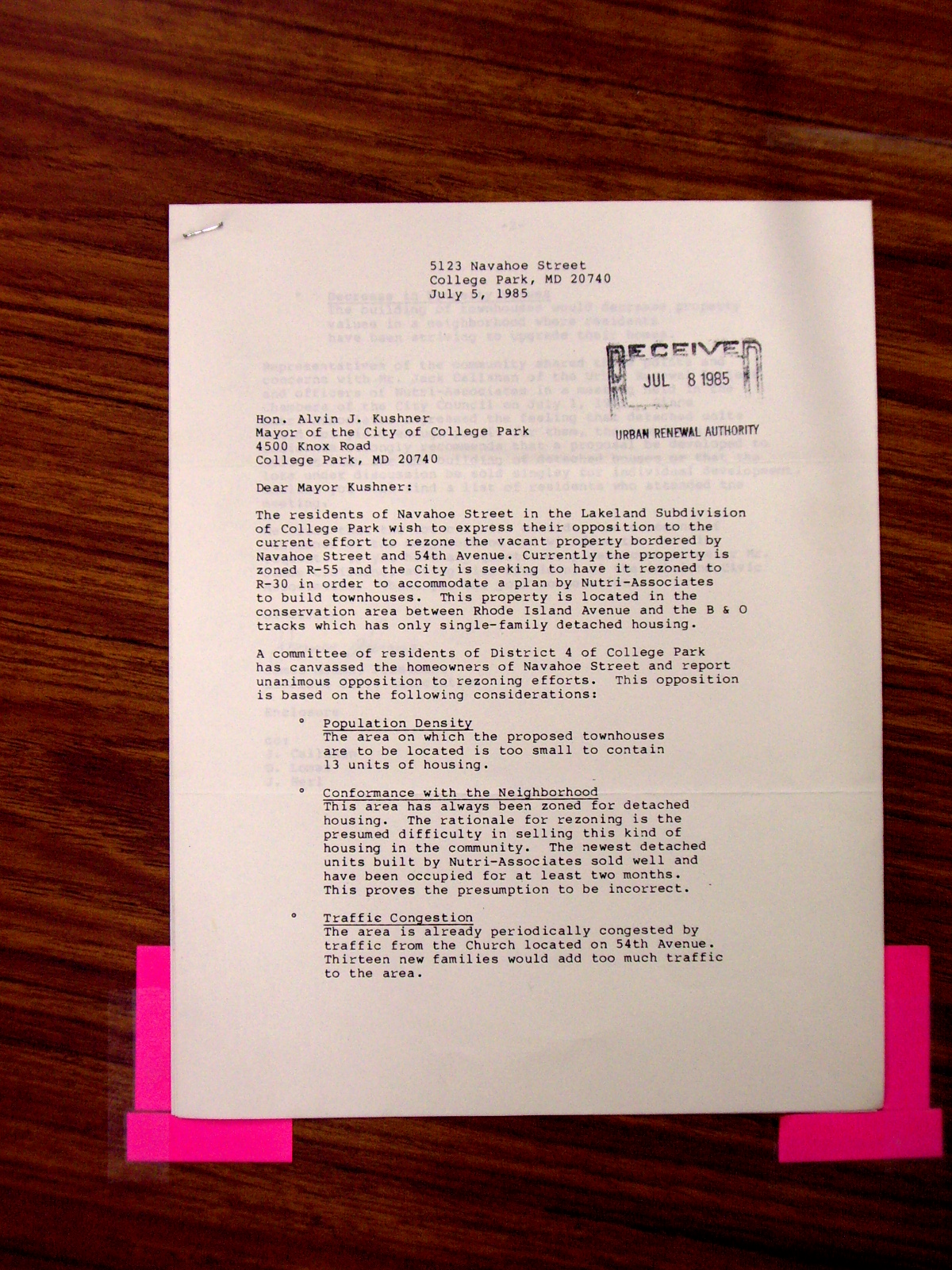
From Lakeland Civic Association to Mayor Kushner
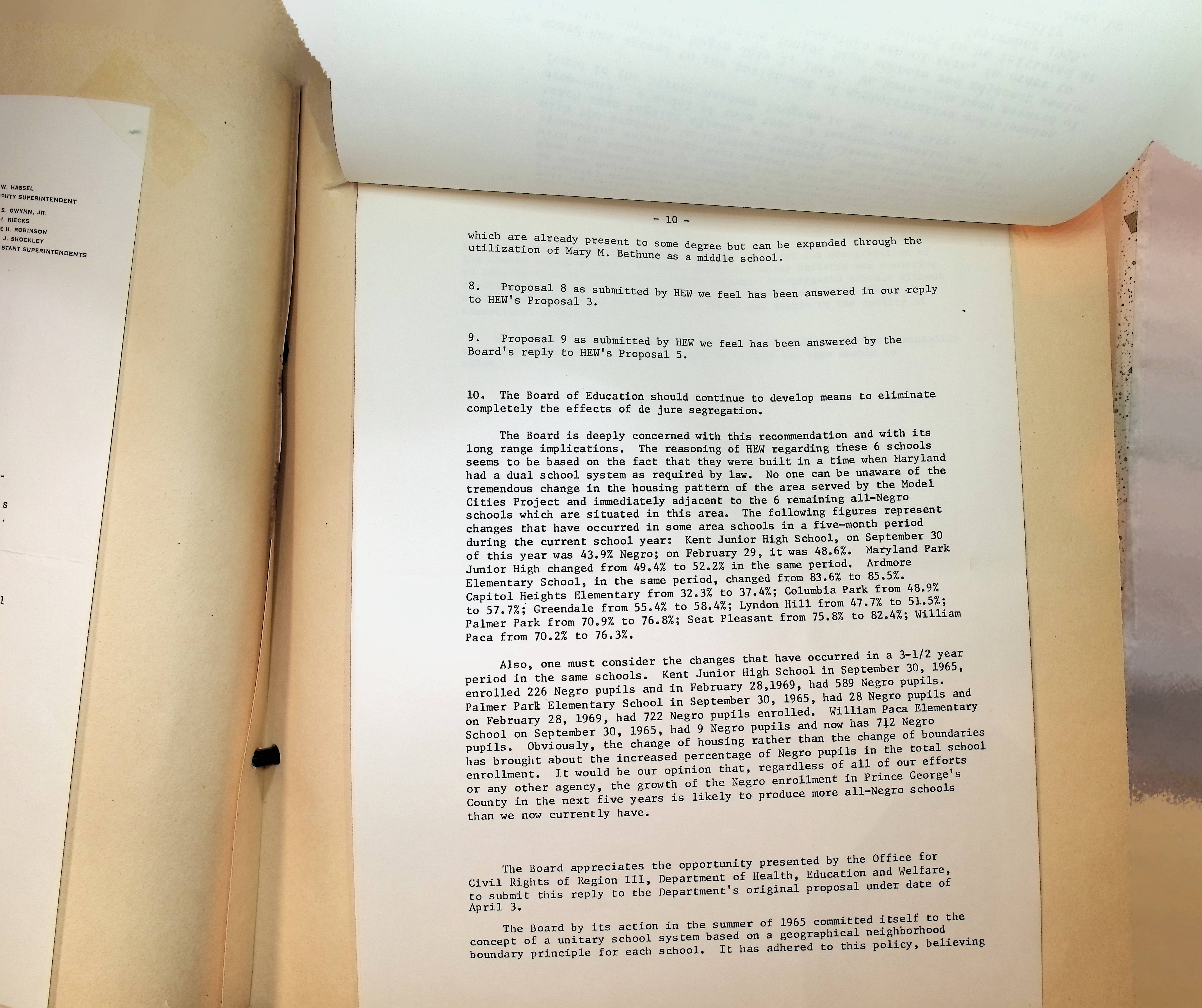
Memorandum Subject Prince George's County Zoning Map Amendments- Applicant, City of College Park Urban Renewal Authority (16 pages)
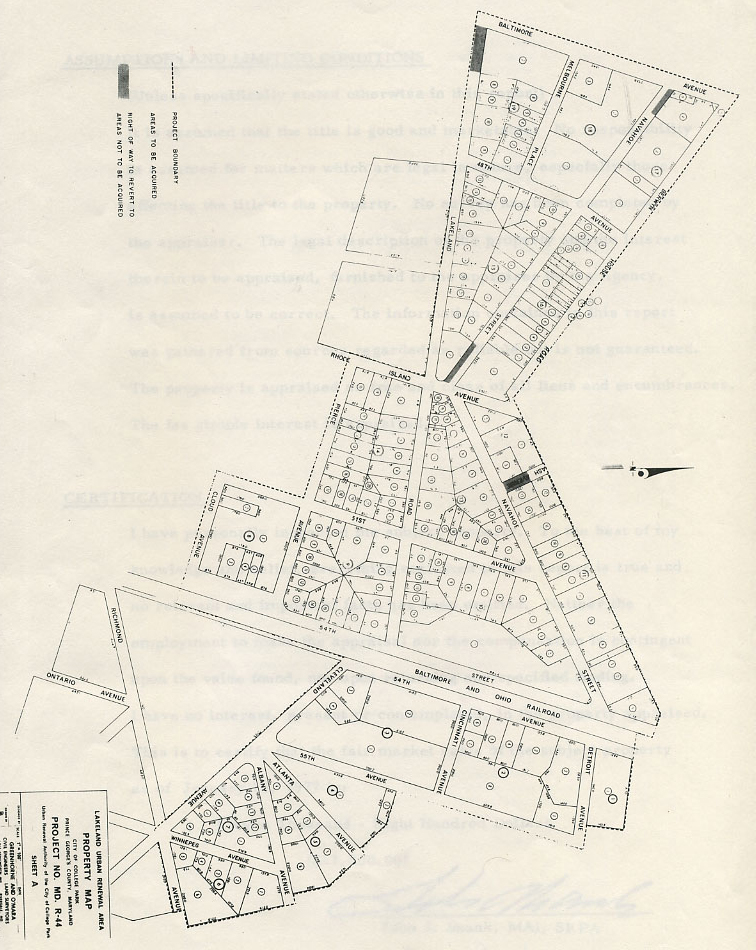
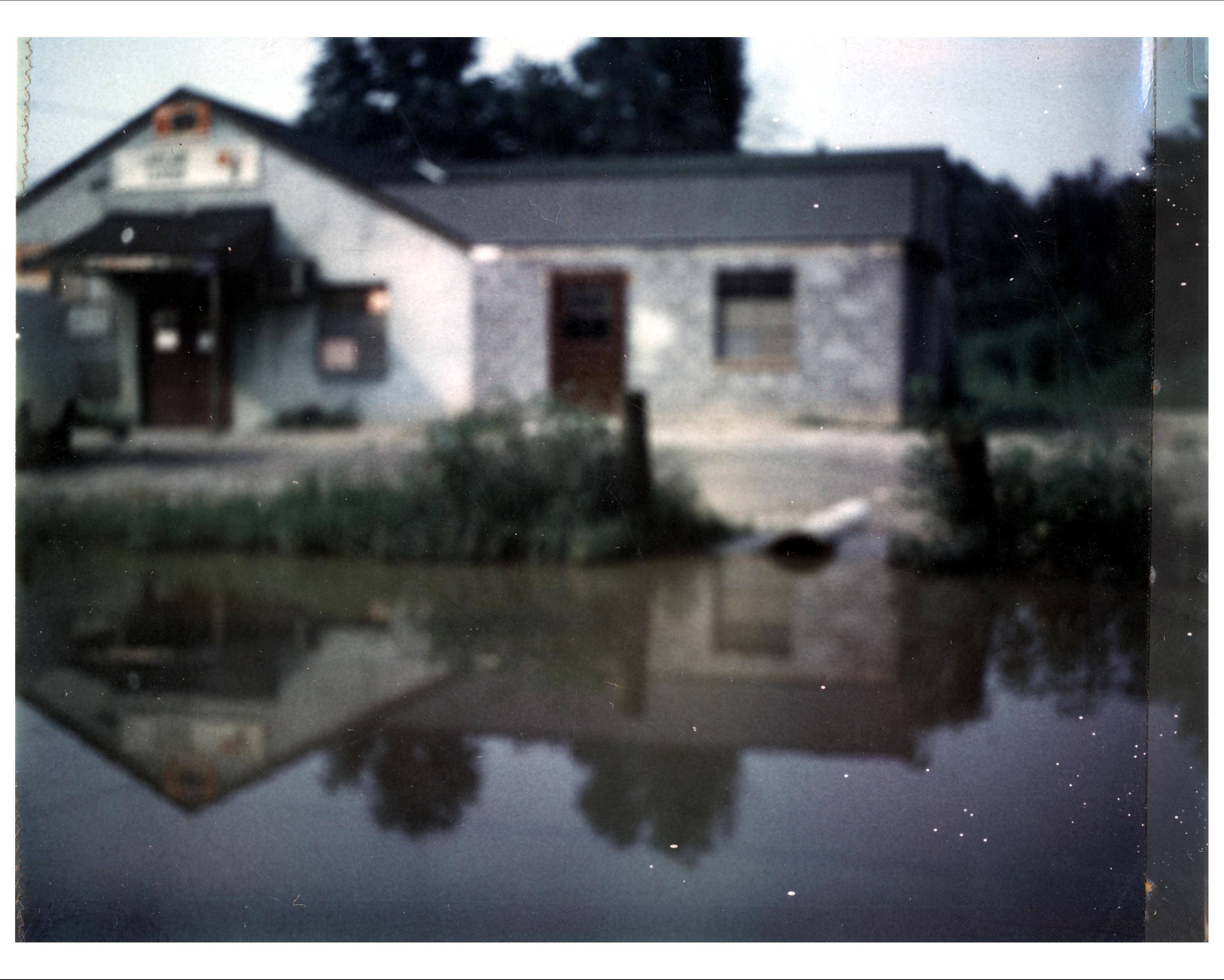
Navahoe Street at Lakeland Tavern after heavy rain. Note the drain pipe which emptied directly into the street
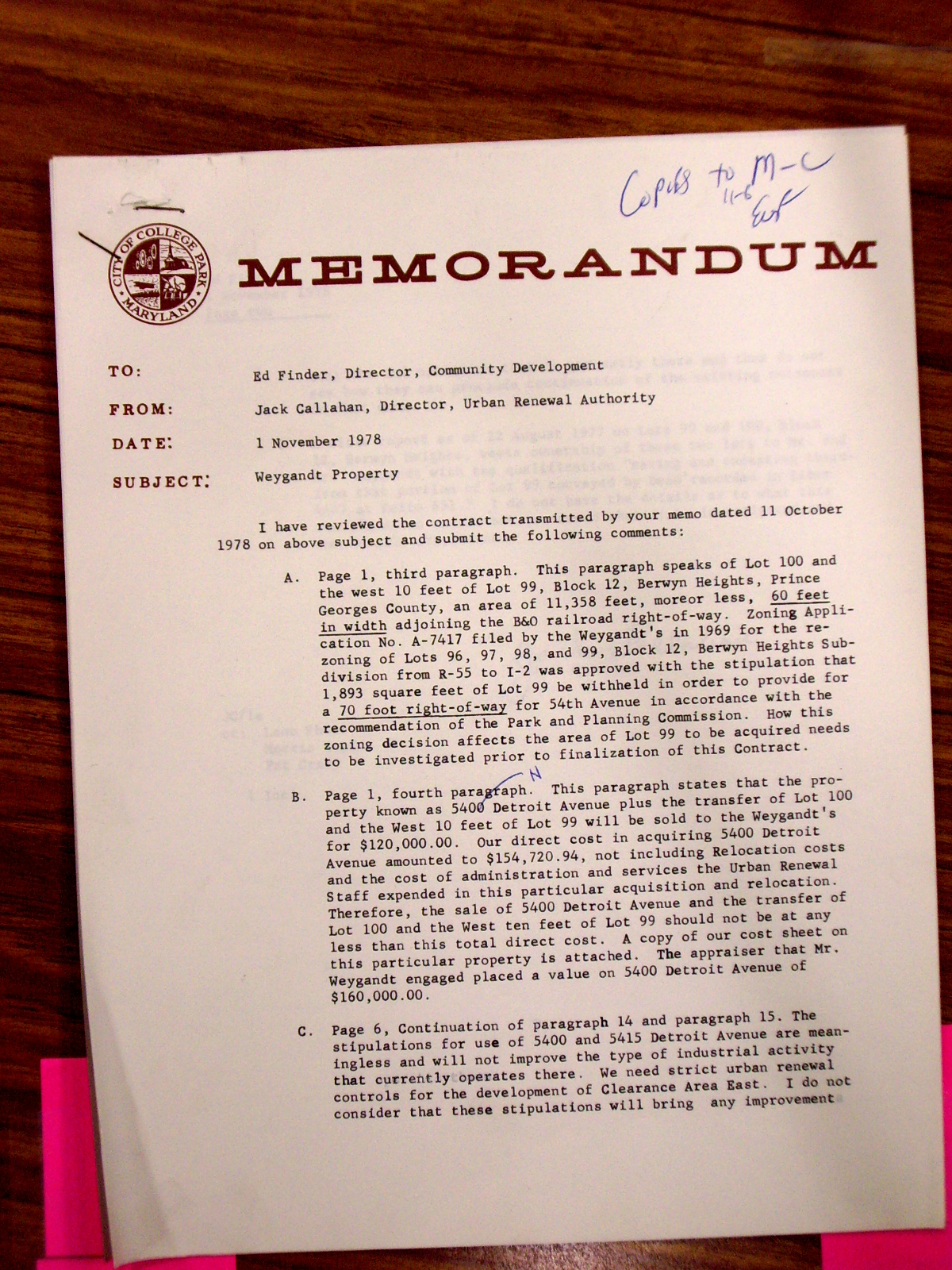
re: Weygandt Property

Groundbreaking for Spellman House page 3. Duplicate of item-02496.
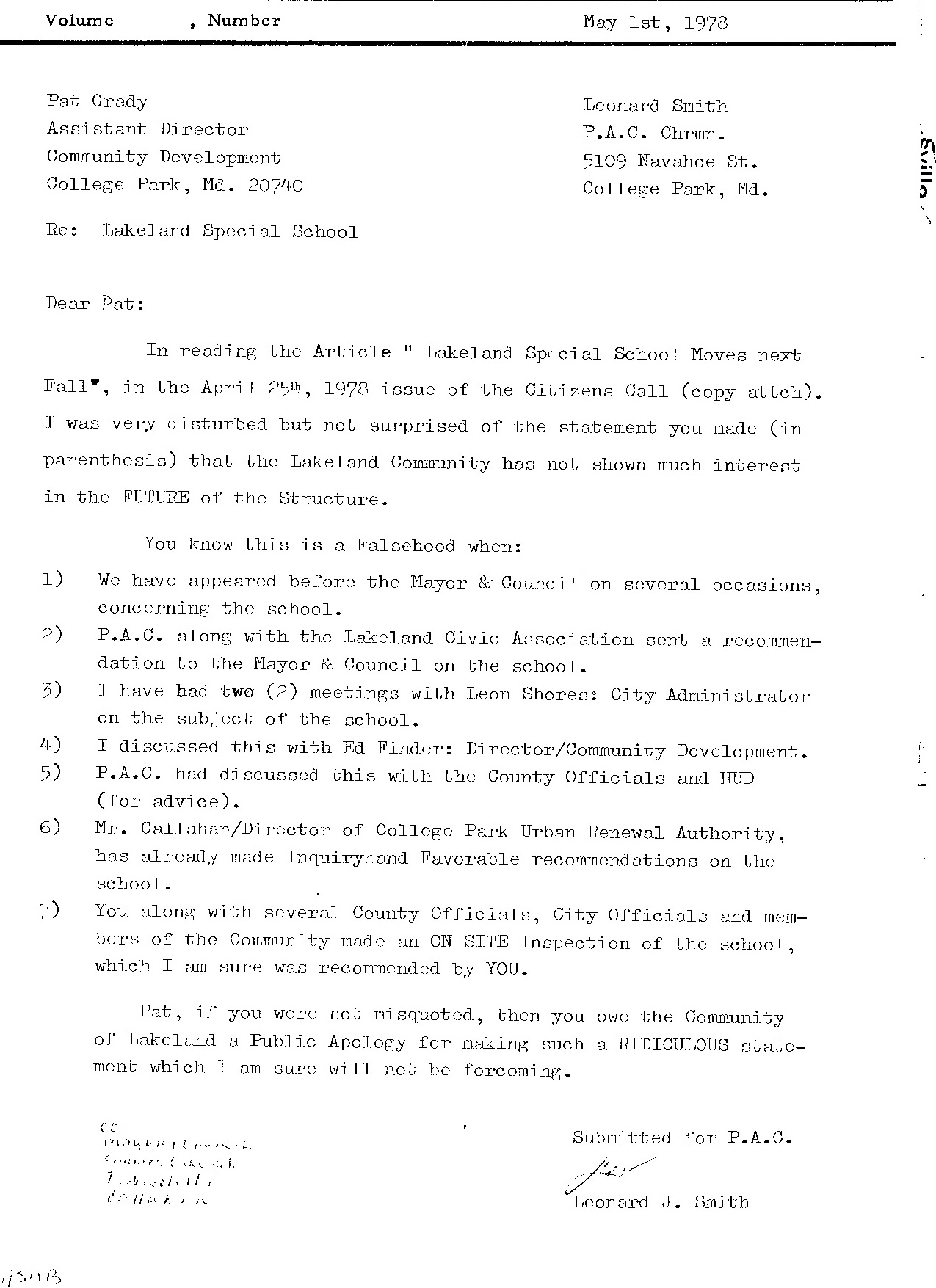
Letter from Leonard Smith to City on use of Lakeland School site
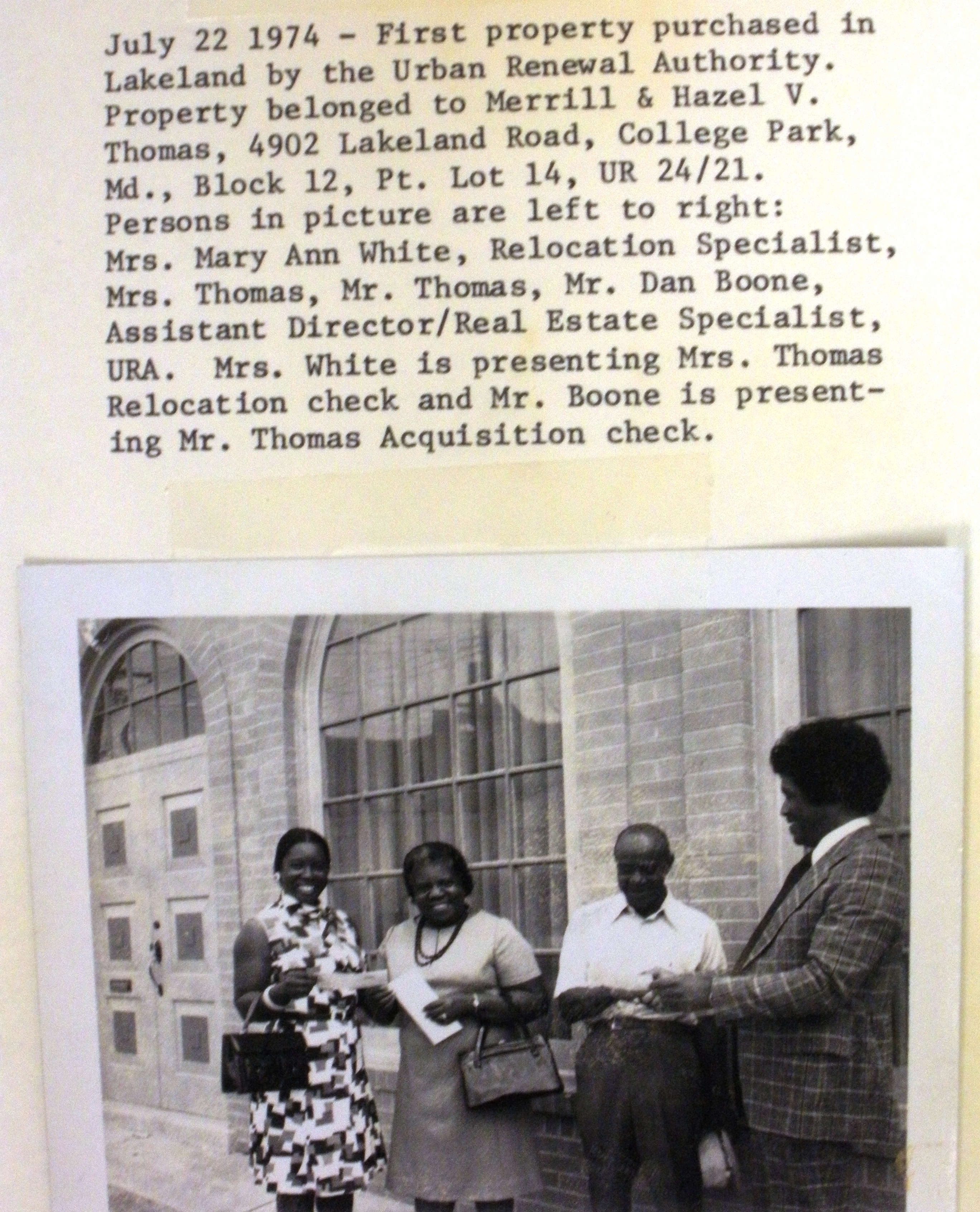
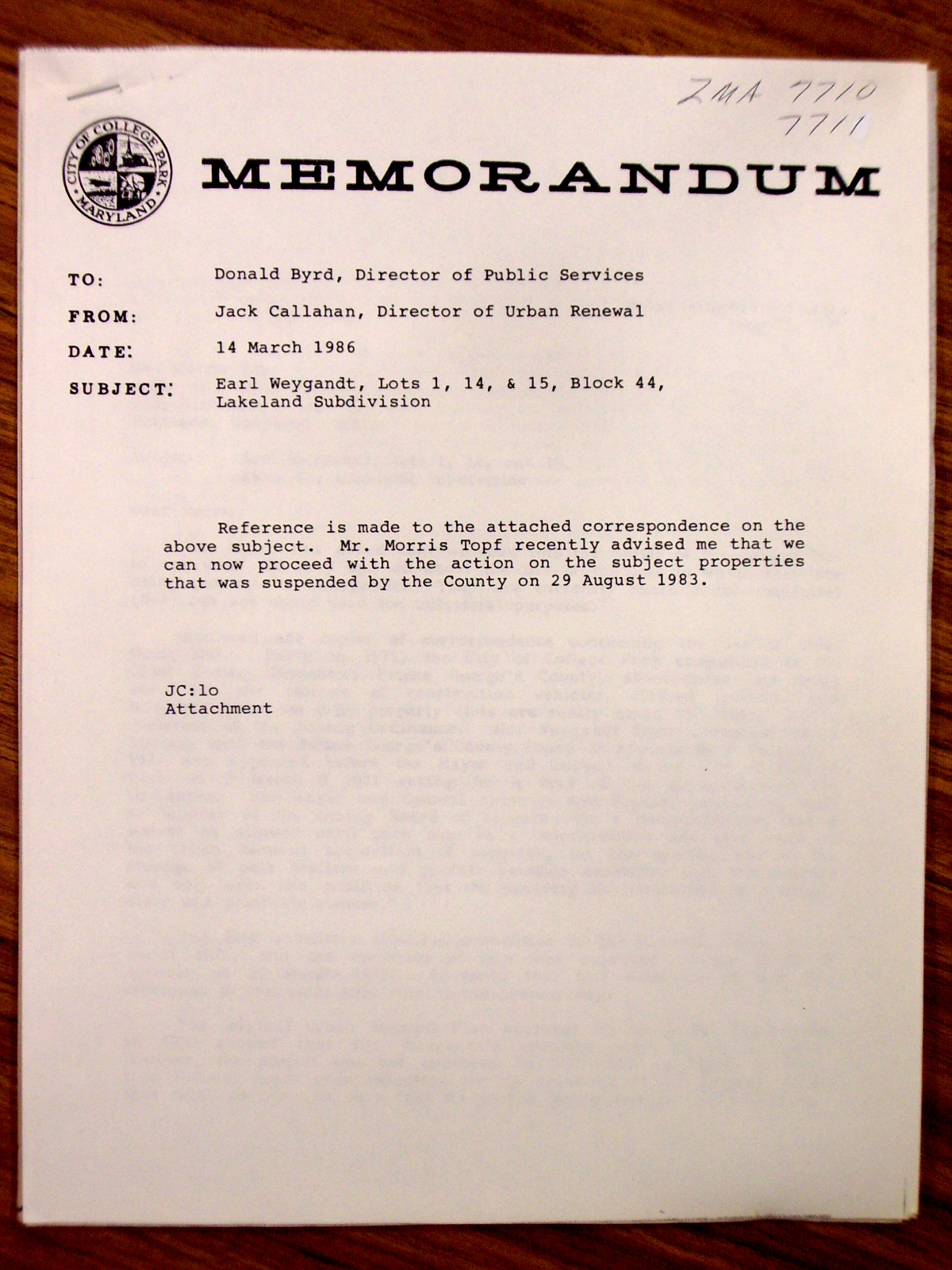
Memorandum to Donald Byrd from Jack Callahan, containing/referencing an enclosed letter to Morris Topf, concerning the use of properties owned by Weygandt.
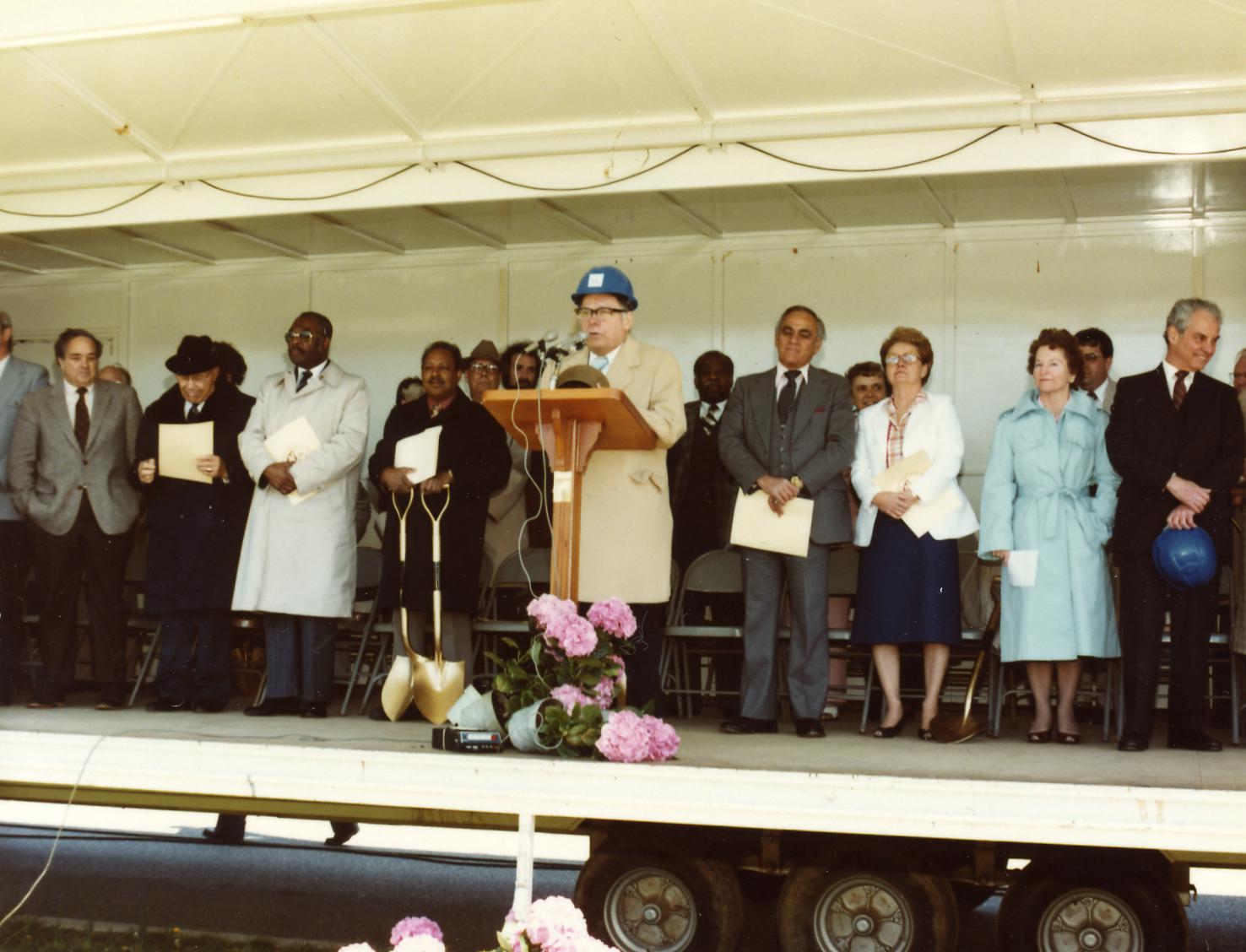
Dignitaries at groundbreaking for Spellman House Apartments, first redevelopment project of urban renewal

By 1981, the rebuilding of Lakeland was at last underway. A process that was expected to take a few years was plagued by bureaucratic problems and policy changes. In fact, rebuilding took decades. Single-family homes were ultimately replaced with high-rise apartment buildings and townhomes. The lake in the eastern section was enlarged, and that area became Lake Artemesia Park. Only a few single-family homes were built. (Courtesy of the City of College Park, Maryland.)

4802 Lakeland Rd & 4812 Lakeland Rd - Contract CPURR-11
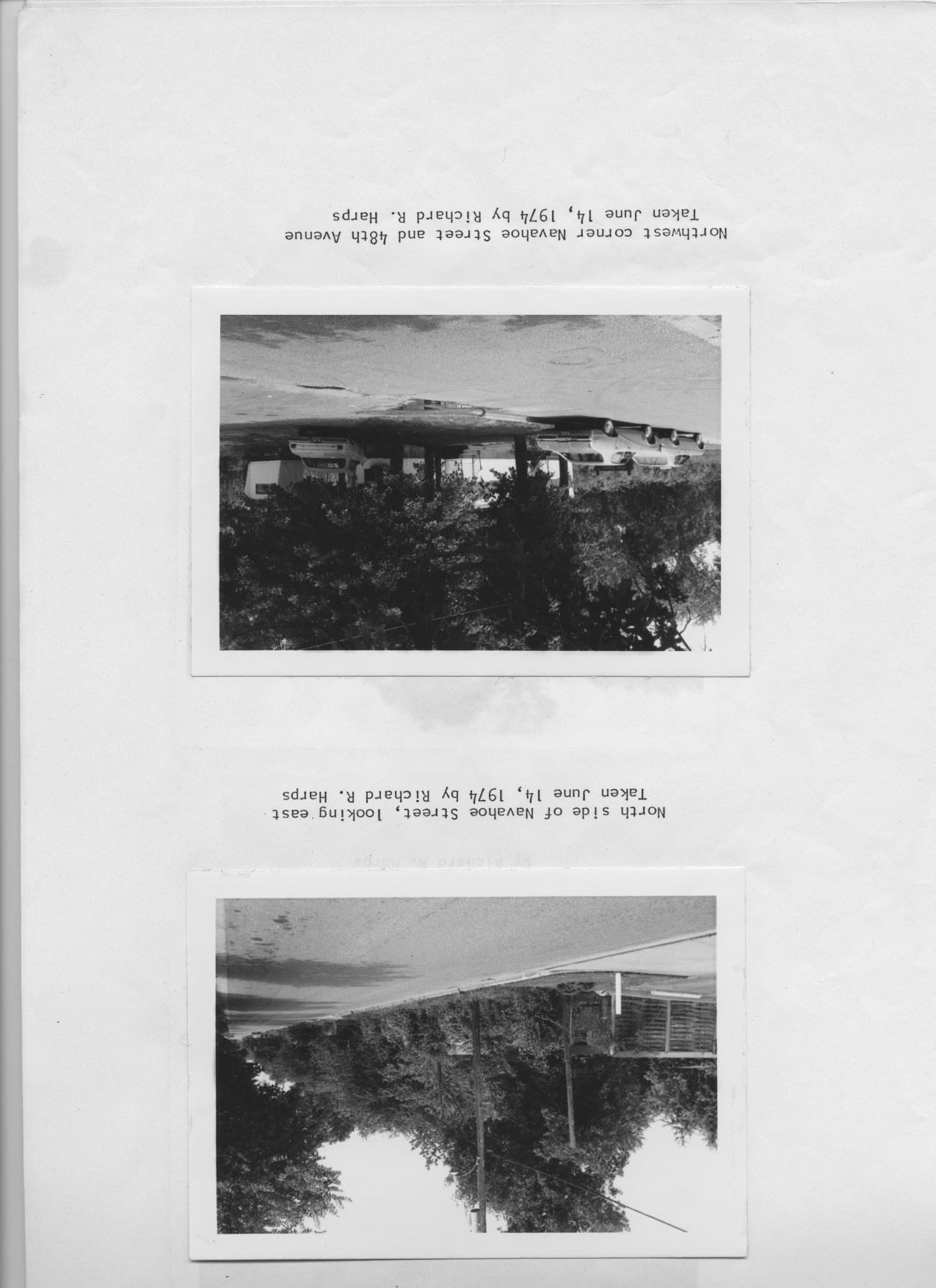
Western Lakeland at Navahoe Street and 48th Avenue

Impact of campus housing on Lakeland project


Mary Braxton’s hand written notes for statement to the College Park City Council.

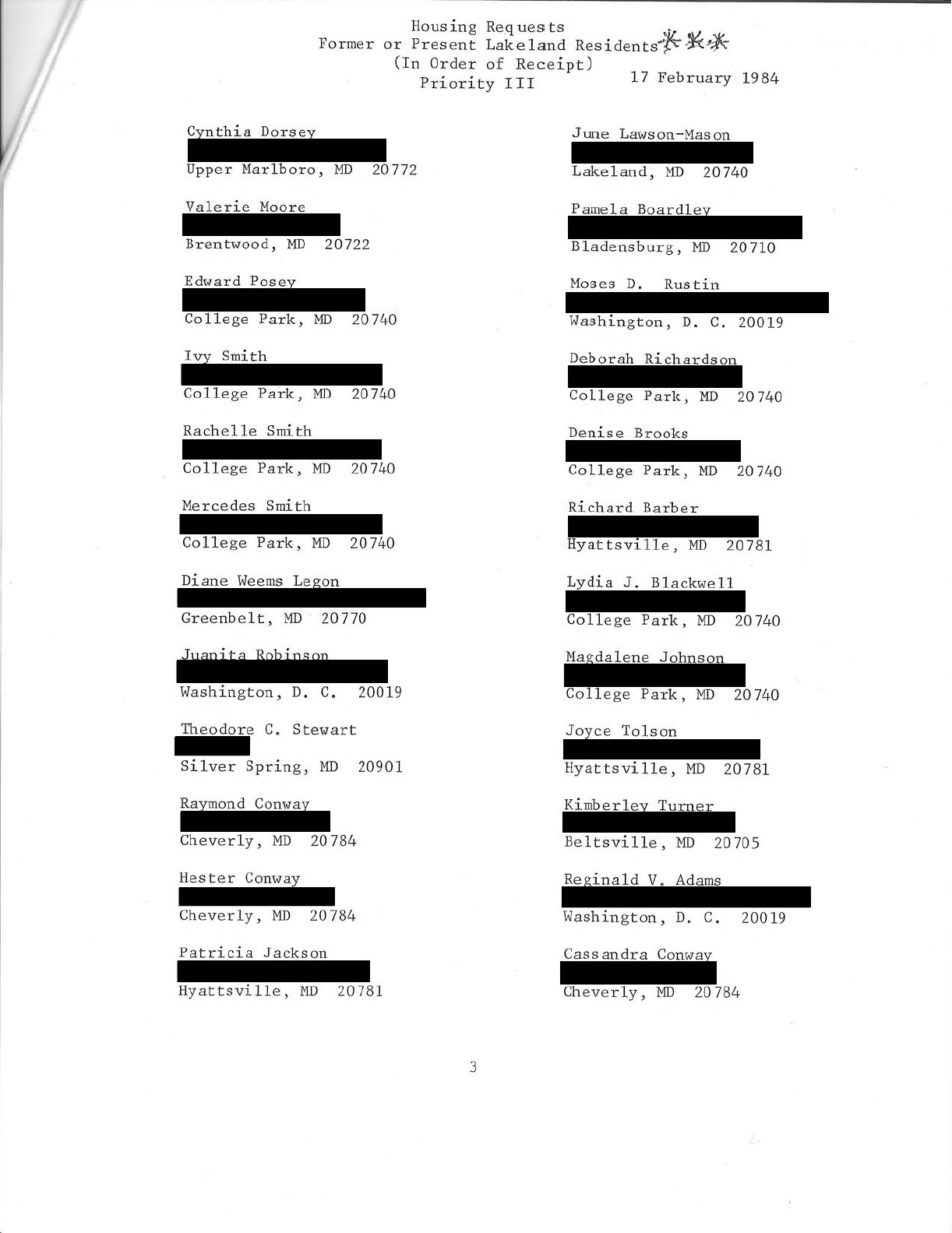
Housing Requests Former or Present Lakeland Residents (In order of Receipt) Priority III. Families who presently or formally lived in Lakeland and are interested in the assist housing being constructed by Leon N. Weiner Associates and are to be given third consideration for housing. The former Lakeland residents consist of families who either moved from Lakeland before the beginning of the Urban Renewal Project or are children of such families or families who were displaced and have married and started families of their own and want to return to Lakeland.

The Diamondback September 15, 1976 Many pieces of Lakeland land were purchased by the Urban Renewal project. The University then discusses the use of Lakeland land for the expansion of their community housing through the Urban Renewal project. This idea is presented by the city community development director, Mr. Edwin Finder. In the meantime, some Lakelanders must rent homes from the city because of the Urban Renewal project’s purchase of their homes. Mr. Finder says that they are to be given first priority in the construction of new housing. At the same time, the Urban Renewal plan exceeded its budget of $5.2 million by another $5 million. The city requested $1.8 million in urgent need funds from the U.S. Department of Housing and Urban Development (HUD) and was approved to receive it to complete the project. The request was sent to the HUD’s office earlier in the summer of 1976. Getting more federal money to complete the project was imperative and was a way to help fix the damage already afflicted on the neighborhood by natural incidents. Mrs. Hollomand part of the Lakeland resident's group stated opposition to the University's involvement in the project. She said the residents had need for new housing.
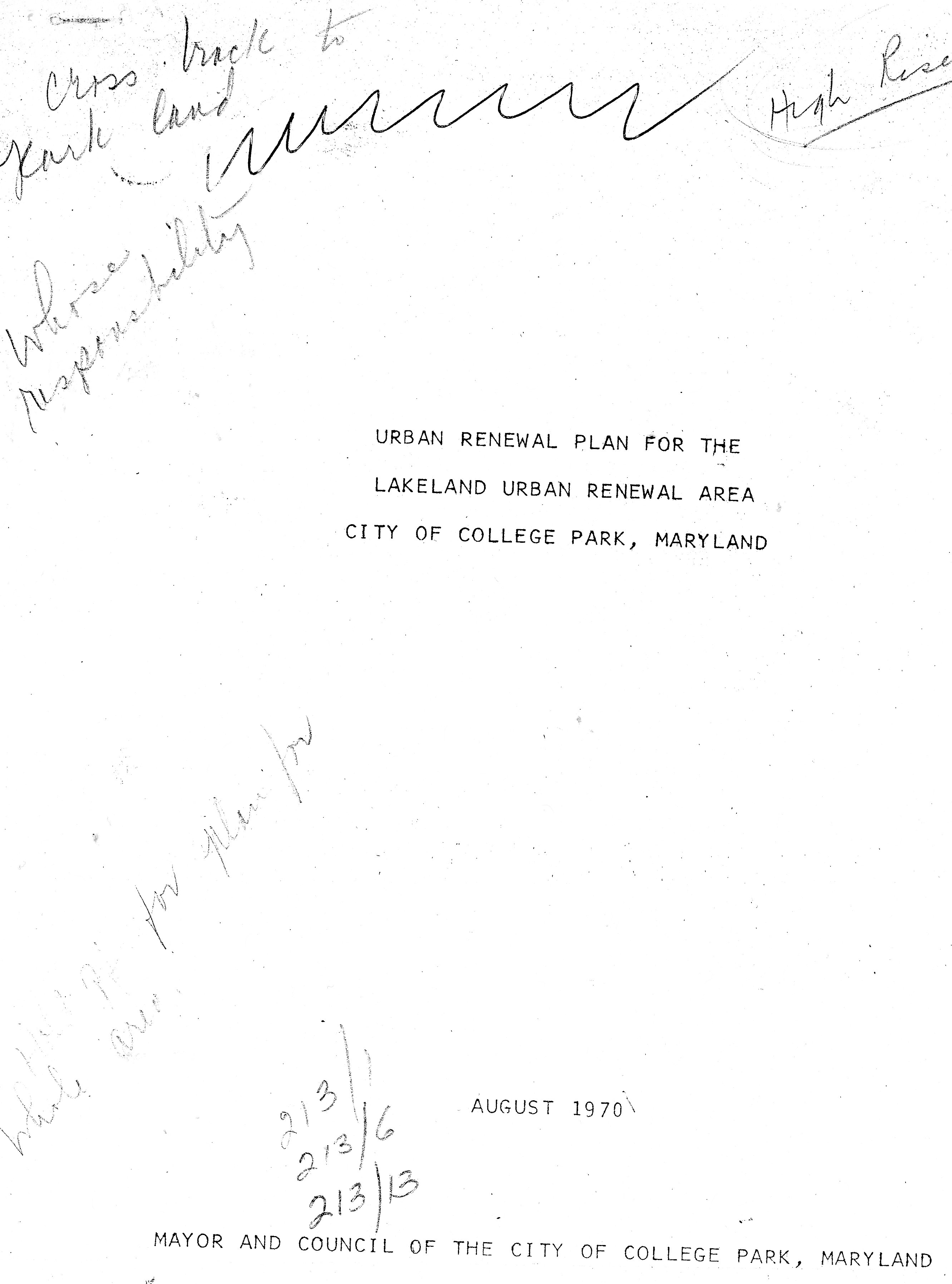
Urban Renewal Plan for the Lakeland Urban Renewal Area City of College Park, Maryland 1970
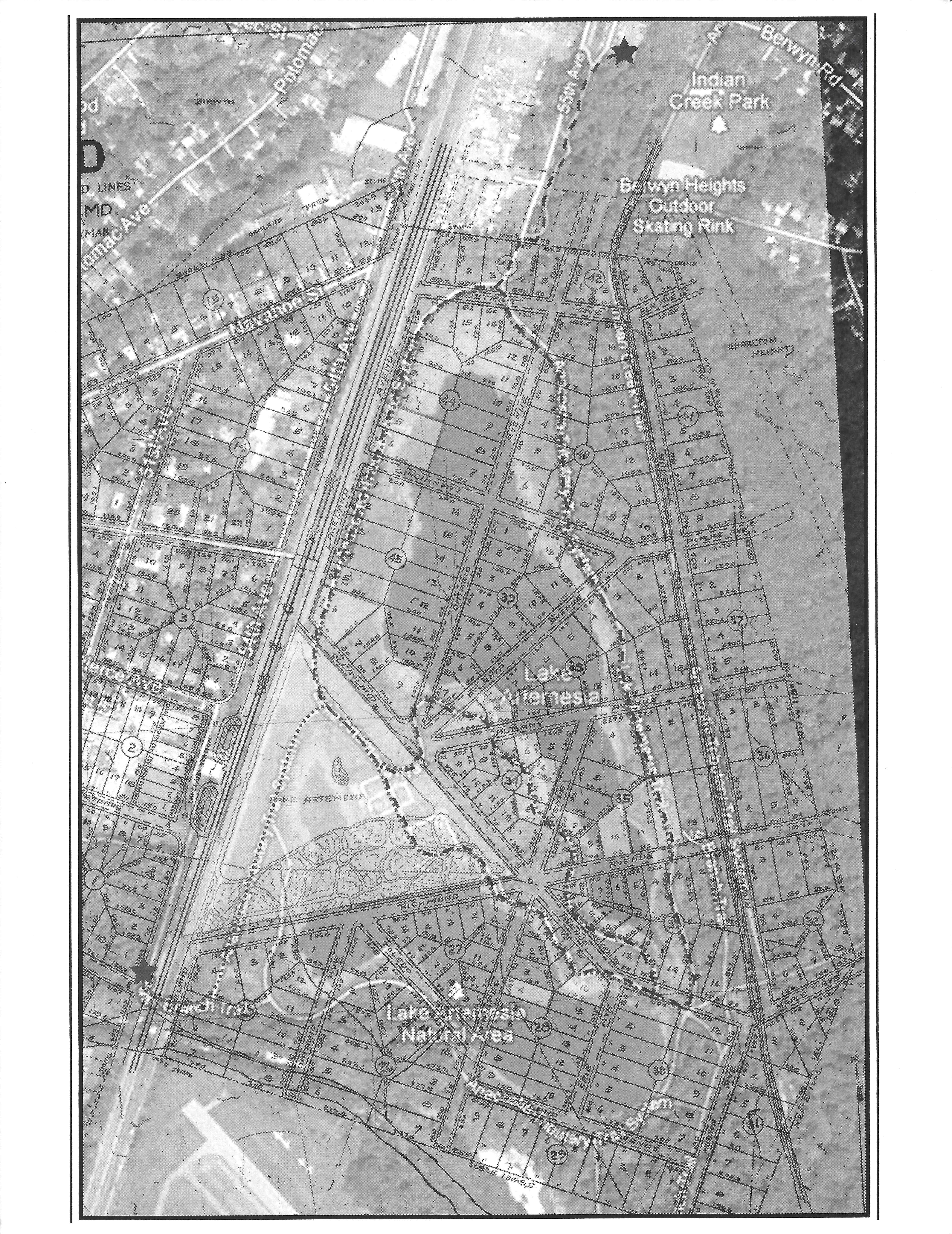
Historic Map and 2000s overlay Work of UMD students

The Sentinel Prince George's Drawing above article show a well dressed. Black family, man woman and young boy on a building site with home debris and a hole. Behind them is a bulldozer with a seated operator and smoke coming from it's stack. To one side is a high rise building and a sign reading "Lakeland Urban Renewal Area, High-Rise Living for University Faculty and Senior Citizens". The boy is tugging at the man' sleeve. The headline reads "Is this where you used to live, daddy?" During a meeting in 1973 College Park officials announced HUD funding of the Lakeland Urban Renewal project. That evening was a celebration which included residents of the neglected all Black community. Lakeland residents, many of whom had been relocated from their homes which had been torn down were displeased with the proposal. They saw nothing for them. Another meeting two weeks ago was not a happy event. At that developer, Leon Weiner shared his plan for the community. The information was greeted with protests from residents. Rather than a development of single family homes favored by the community Weiner's plan features six single family homes, a high rise for University of Maryland faculty members and another for senior citizens along with some townhomes and finally some low income housing units. One whole area of the community would remain vacant. Residents noted that the plan was set without input from them. They even questioned the selection of Weiner for the project. Early in the project it was clear urban renewal was too big an endeavor for a small city. By that point it was too late to halt the project. Costs snowballed. The original price tag was $1.3 million that grew to $2.9 million and now rests at 10 million. Things went down hill for the community too. In 1968 the city's urban renewal director assured the them of "retaining the community's sprit and identity" "This is a project of urban renewal, not Negro removal." In 1970 the city administrator assured a reporter "No one (in Lakeland) will be displaced." The current urban renewal director reported 67 families had already been moved out and 44 more will be leaving. There is a history of broken promises. Lakeland was not a slum. There were some substandard homes, and poor and unpaved roads. The fault of the city. Lakeland was a vital community with a history. It would be forever torn apart by Weiner's plan. If that night of promise in 1973 was the city's finest hour the finalization of the Weiner's plan in two weeks will be College Park's worst.

Washington Post Leon Wynte February 11, 1982 Page B1 Residents of Lakeland describe the community that once was, homes. and childhood memories. They asked for help to stop flooding, pave roads and improve some of homes. What they received was an ease of flooding as well as sidewalks, and a high rise apartment building for senior citizens. Gone though are 104 of the community's 150 households. Federal bureaucracy and inflation are blamed for this outcome. One former resident is grateful for the program as it helped her move to an accessible modern home. Another said he doesn't visit anymore as "Everything's been pushed out" Lakeland is less than a mile in area and divided by railroad tracks. It was once a white community and some burned their homes when leaving. Dispite little support from others a Black community thrived with its own institutions. There was a high school, tavern, Elk's Hall, American Legion post. At the start of the project residents were optimistic. In 1965 the area was surveyed. Four years later a 36 page urban design plan was created. In 1971 the Federal Department of Housing and Urban Development approved $5 million for the project and $1.2 million was to come from the City of College Park. The original plan called for 90 units of low to moderate income housing mixed with 47 single family homes in the western area along with 300 units of housing in the east. Little of this took came about. Work was held up over environmental concerns causing home purchases to not begin until 1973. Jack Callahan, urban renewal director reported the program cost by 1976 had doubled. The City then asked HUD for more money. Ed Finder joined the City staff and brought new life to the program. He was a former reginal director with New York states' Urban Development Corporation. He used his connections to find interest in the project. Five developers made proposals. Lakeland residents endorsed their top three proposals. Leon Weiner was not among that group. Finder endorsed Weiner, a known developer of government backed projects and the city agreed. He proposed high rise apartment buildings. Finder left the project the next year and is now director of economic development in Paterson NJ, Of the project he is quoted as saying "There are people who may be bitter." The Project Area Committee made up of residents pretested plan changes. Mary Braxton said she has a box full of records from the project and hates to think about what took place. It makes her ill. Vernice Buell of HUD said it was rare for residents to return unless a real effort is made to meet their desires for housing. Harry Braxton, Jr called the bulldozer the 'giant eraser'. No recreation facility was included in the plan and the PAC requested the purchase of the Lakeland High School building to fore fill that use. That request was declined. Mrs. Braxton said "What we have looks good, but we don't have much" "We gave up two-thirds to get one-third."
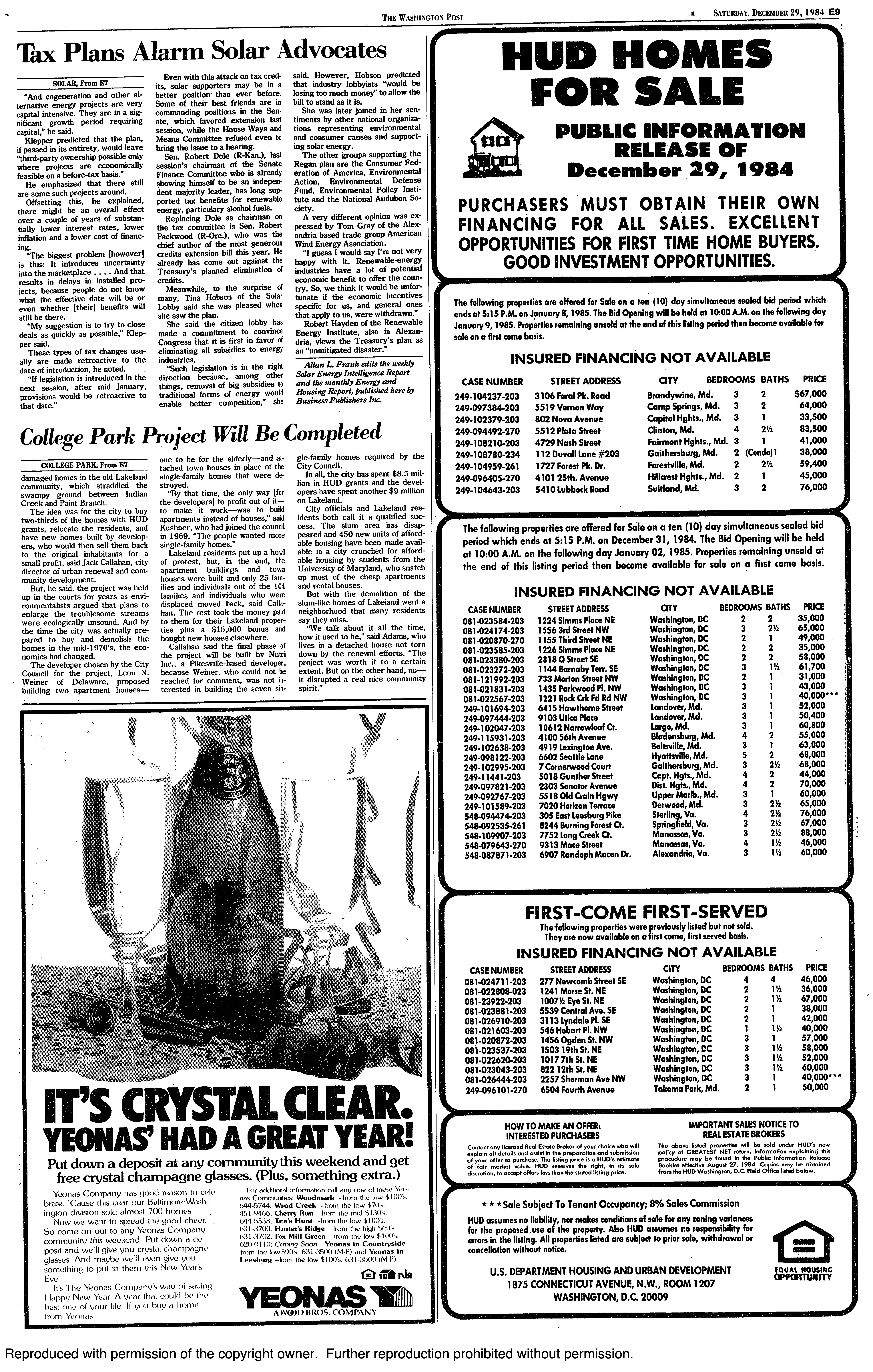
2nd part of article

MD R-44 1961-March 1973

February 1969